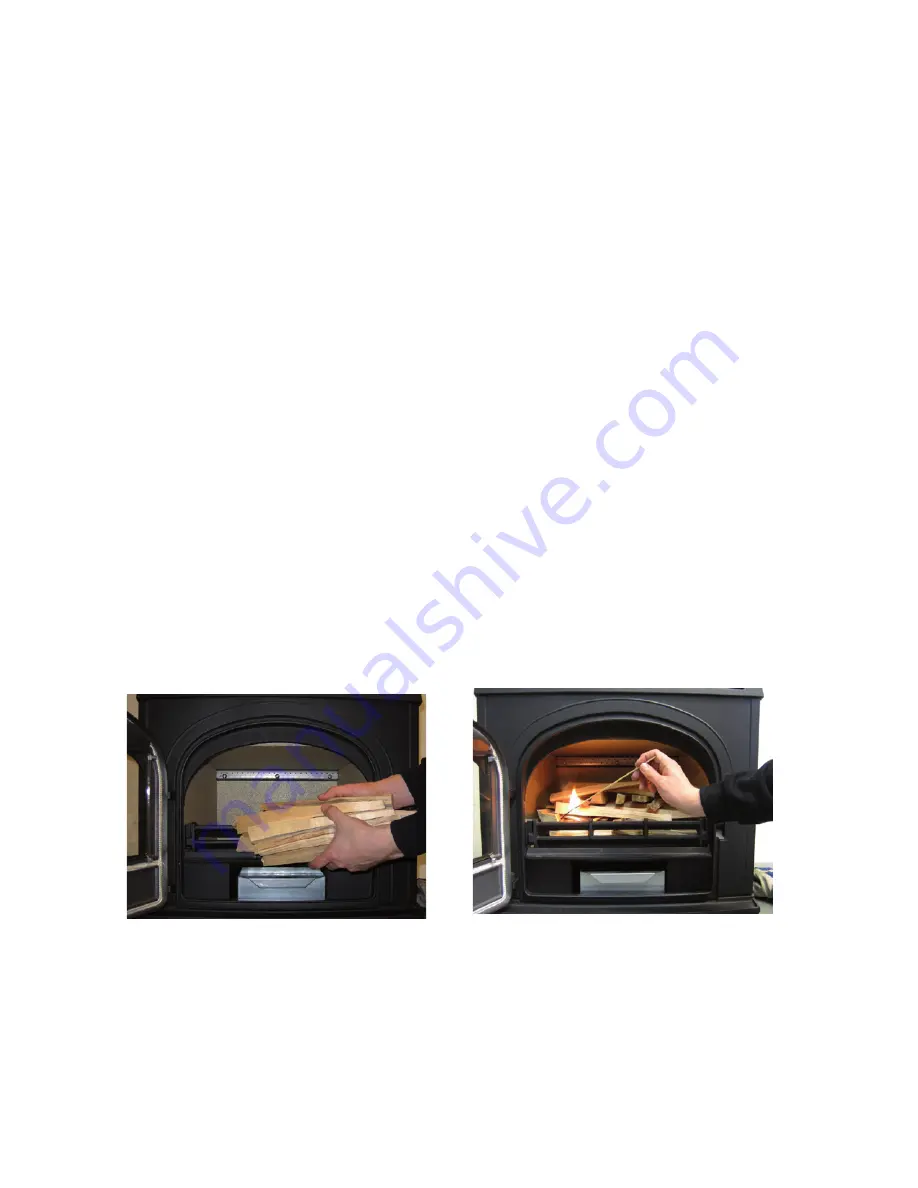
3
n principle
Your stove has four air supplies:
Primary air is controlled by the upper air controler of the door. The air eventually washes at high
speed down the back face of the door glass. This super-heated air helps with the combustion
of volatile gases produced by the fire.
Secondary air is supplied to the top of the fire through holes in the tubes under the lower baffle.
This effectively burns off other residual gases, making for very clean emissions. This air supply
is
constant and cannot be varied.
The lower air controler on the door is only for use the first 5 minutes during the light-up period.
This controler supplies air up through the bottom grate and will help achtivate the embers. Under
normal conditions it is not necessary to use this air and the controler must be closed.
Pilot air is supplied to the coalbed through a hole in the tube placed behind the front grate. This
air will achtivate the embers. This air
supply is
constant and cannot be varied.
2.2 Lighting and loading intervals
When first lighting the stove, a large volume of air is needed. When the stove is cold, you should
leave the door open an inch or two for the first few minutes and open the primary air
supply completely. While the door is open, do not leave the stove unattended.
To form a reasonable bed of ash on the floor of the stove, you should use 5-6 inches thickness
(-4 pound) of dry kindling at the initial lighting. Always maintain a -,5 inch (-3 cm) layer
of ash on the floor of the combustion chamber at all other times.
Open the lower controler a bit, if you are experience poor draft in the chimney. Use only this
controler during the first 5 minutes after light up. Keep the controler closed afterwards
.
. A layer of embers will form rapidly if
the stove is lit with fire lighters or 7-0
rolled up sheets of newspaper, underne-
ath roughly 4-5 lb. of dry kindling
. Light the fire
























